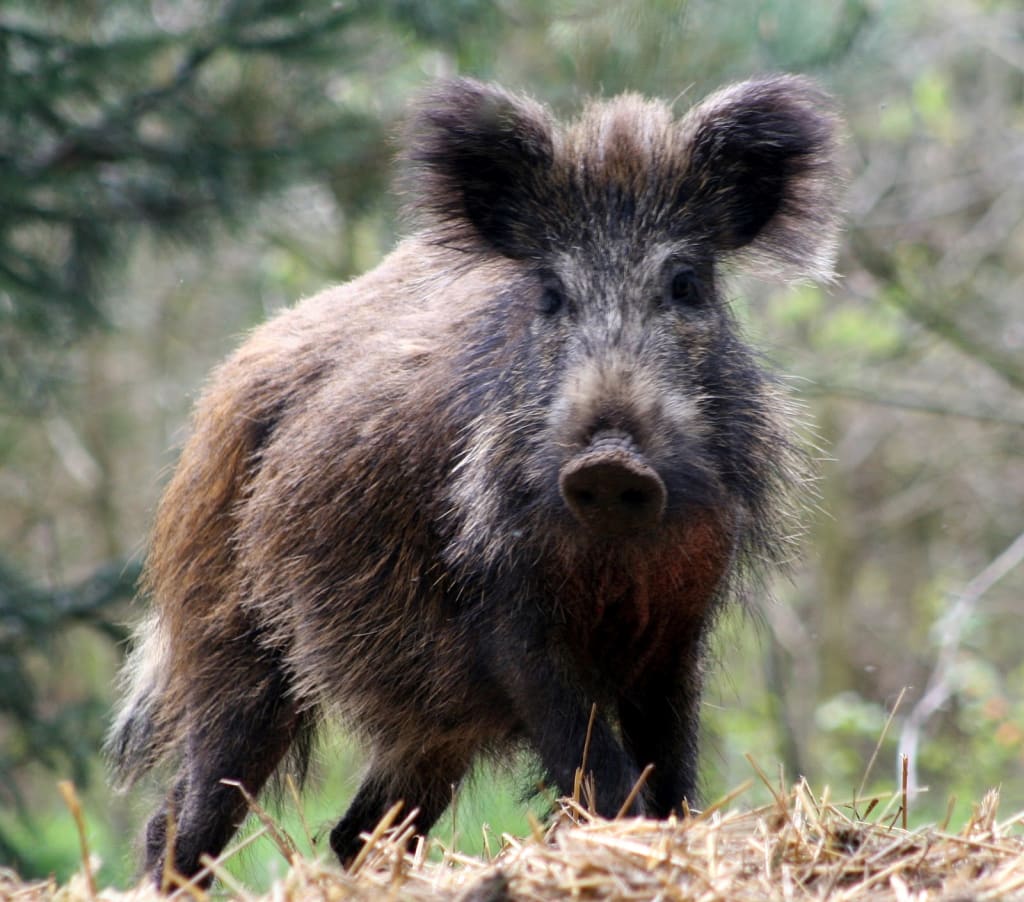The Paradox of Chernobyl's Radioactive Wild Boar
How is it possible?

After the Chernobyl Nuclear Power Plant exploded in 1986, scientists started studying the area to learn about radiation's effects on the ecosystem. Radiation isn't good for health, so it's good news that contamination levels in nearby animals have been decreasing over the years. However, wild boars in Chernobyl have maintained the same levels of radioactive isotopes in their bodies for years, which goes against what we know about radioactive decay and ecosystems. Scientists called it the Wild Boar Paradox. This year, they may have finally solved the mystery.
The Chernobyl disaster occurred in Northern Ukraine in 1986. A meltdown at the plant released a significant amount of radioactive material into the air and surrounding area. Sadly, 31 people lost their lives as a direct result, with many more developing cancer later on. This event remains the largest radioactive disaster in Europe's history. The affected area was quickly evacuated and became known as the Chernobyl Exclusion Zone. However, the plants and animals within it were unable to escape the radiation's effects. Scientists have been studying the Exclusion Zone ever since, seeking to understand how ecosystems react to radiation exposure. By monitoring the soil and living things in the region, they have observed a gradual decrease in radioactive contamination over the years. Despite this progress, lingering effects are still present in some areas.
Radiation works in a pretty predictable way. Scientists noticed something interesting - wild boars were still radioactive even when other animals were recovering. This is known as the Wild Boar Paradox. Radioactive atoms break down at different rates, which we call their half-life. Some elements decay faster than others. For example, Iodine-131 only lasts 8 days. But Strontium-90 and Cesium-137 stick around for 29 and 30 years. So, even though the wild boars at Chernobyl are still radioactive, we understand why!
So, 30 years after the disaster at Chernobyl, we would expect the radiation levels to have decreased by about half.
Radiation levels don't decrease consistently everywhere in an ecosystem. Radioactive elements move through plants and animals, accumulating in their bodies. This cycle continues and results in varying levels of contaminants in different places. Radiation also seeps into groundwater, too deep for most organisms to reach. The rate at which radiation moves through animals is called the biological half-life. For example, Cesium-137 has a biological half-life of about 70 days. This means that if you consume food with Cesium-137, half of it should be out of your system in around 70 days. It's important to note that the biological half-life of Cesium-137 is shorter than its ordinary half-life because the animal actively excretes it from their body along with other waste.
The animals in Chernobyl are continuously exposed to radiation throughout their lives. This means that every time they eat something radioactive, it adds more time to their exposure. Ecosystems are complex, but radiation levels in the environment should decrease over time, either at the same rate as its half-life or faster. This is seen in plants and animals, with a decrease in average radioactive contamination in deer over time. However, boars in the area still have unusually high levels of Cesium-137, which hasn't decreased at all in over 30 years. This seems to go against the laws of physics, as the half-life of Cesium-137 is 30 years.
In a study from 2023, it was found that the wild boar paradox may not actually be a paradox after all. This is because there was an important piece of information that was not previously included. The wild boars are not just radioactive due to the Chernobyl disaster, but their radiation levels have been elevated for decades before that event.
In the 1950s and '60s, the Soviet Union did a lot of nuclear weapons tests in the atmosphere. People were worried about radioactive contamination from these tests. It was believed that the fallout from the Chernobyl explosion was a bigger issue. However, recent research has shown that a significant amount of cesium contamination in boar meat actually came from those weapons tests, not Chernobyl. Scientists used a new method to better detect remnants of Cesium-137 decay. Remember how radioactive decay works? Atoms don't just disappear, they turn into daughter products, which can be stable or another radioactive element. These daughter products can provide information about the original radioactive material they came from, like how long it had been there. So, it turns out, things in the atomic world are pretty complex!
Researchers used ratios of daughter products to determine the age of cesium contamination and its source. They discovered that the contamination was older than Chernobyl, pointing to weapons tests as the main culprit. The cesium found in boars can be traced back to mushrooms, which absorb radiation from deep sources. The mushrooms transfer the contamination to boars through their diet, resulting in high internal radiation levels. This discovery helps understand how radiation circulates in ecosystems and informs future investigations. So there you have it, no need to worry about mutant radioactive boars...for now at least! Remember, Teenage Mutant Ninja Turtles might be fictional, but the possibilities are endless!
About the Creator
Enjoyed the story? Support the Creator.
Subscribe for free to receive all their stories in your feed. You could also pledge your support or give them a one-off tip, letting them know you appreciate their work.






Comments (1)
Ok